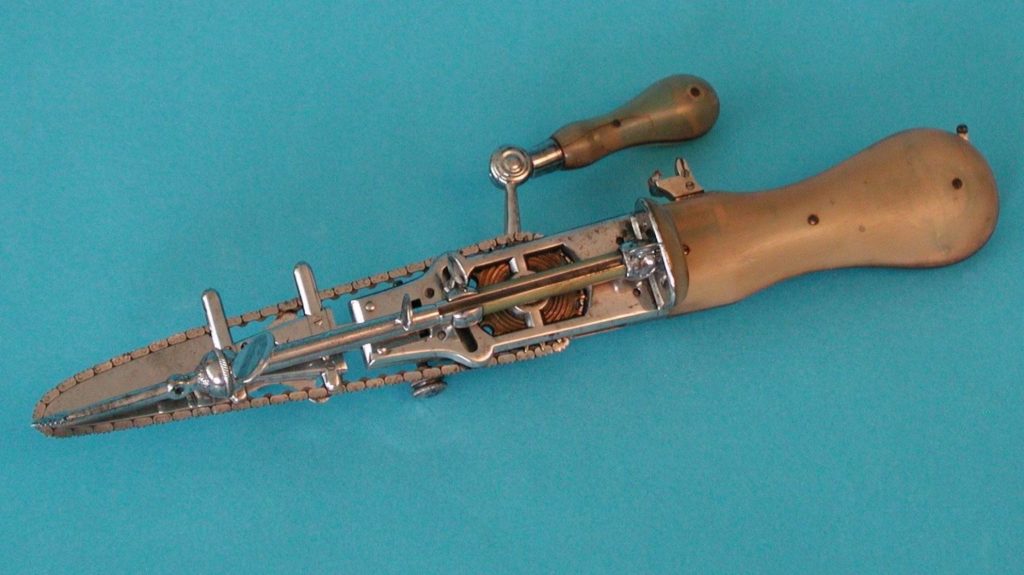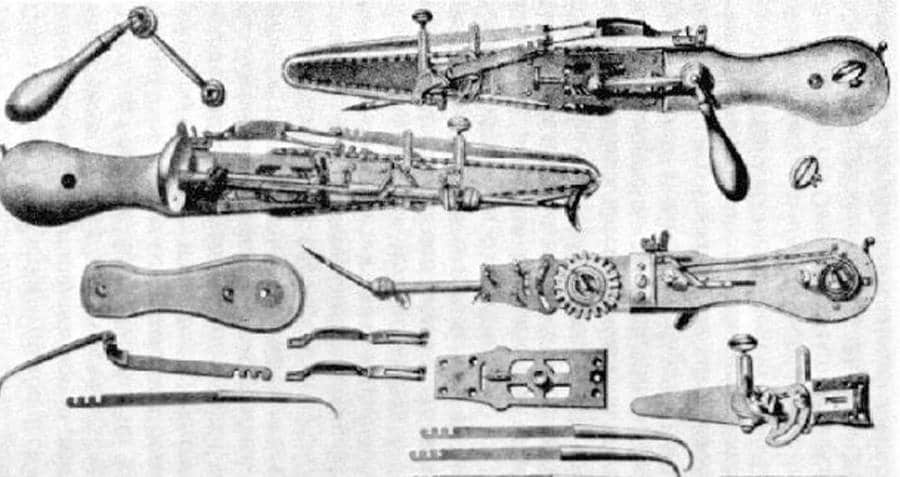Last updated on July 20th, 2024 at 05:27 pm
People today usually associate chainsaws with cutting down trees, but their original use you’re more likely to associate with something like the Texas Chainsaw Massacre.
In the dark ages of modern medicine, the chainsaw was invented to assist in childbirth.
Why Were Chainsaws Used in Childbirth?
We often take for granted how miraculous C-sections are, which made up 31.8% of total births in the US in 2020. Being able to remove a baby from a womb surgically has saved millions of lives and lowered childbirth mortality rates astronomically.
However, back in the 1700s, this wasn’t an option. If a baby was stuck in the mother’s birth canal, there was a genuine chance that both the baby and/or mother would die.
Though not as eloquent as a C-section, 18th-century doctors developed the Symphysiotomy to help in these cases.
What was a Symphysiotomy?
Before I dive in, you should be grateful that symphysiotomies are no longer used, and for excellent reasons. The procedure was messy and dangerous and, when successful, would leave lasting physical and mental damage to the mother.
The Symphysiotomy originated with Severin Pineau in 1597. After witnessing the unfused pelvic bones of a woman during a public.
His idea was that doctor would remove bone and cartilage from the woman’s pelvis, then manually open it so the baby could pass through.
Unfortunately, anesthesia hadn’t been invented yet, so the process was extremely brutal. On top of that, the best tools to get it done were knives and saws, which aren’t very effective at cutting through cartilage and bone.
How did the chainsaw become the solution?
These poor tools created a problem that needed a solution, and in between 1783 and 1785 two doctors stepped up. John Aitken and James Jeffray wanted to make the dangerous and extremely painful symphysiotomy easier, so they invented what would later become the chainsaw.
Your image of a chainsaw probably includes a Pacific Northwest logger in a plaid shirt chopping down a tree with a modern chainsaw, but the first was much smaller. They called it the osteotome, which basically translates to “bone cutter” from Greek.

It looked like a kitchen knife with teeth wound in an oval powered by a hand crank.
It’s funny to think something as horrifying as this was actually invented to improve people’s lives. Honestly, it also probably saved some lives along the way.
It made cutting the pelvic bone easier, and it became a tool for cutting bone in other procedures throughout the 19th century. As anesthesia and C-sections came into practice, symphysiotomys became less common, and the osteotome disappeared.

The Modern Chainsaw
Just because people stopped wanting to cut each other with a chainsaw didn’t mean they didn’t see the practical value. If it can cut through bone, it could cut through all kinds of things, like wood, ice, watermelon, or whatever you’d like!
Samuel Bens’ patent for an electric chainsaw was designed to cut down massive redwood trees in 1905. The design was improved upon over the 20th century until they started to resemble the modern chainsaws you see today.
Like inventions like the slinky, Play-doh, and Listerine, the chainsaw is no longer used for its original purpose, which I think is a good thing. A world where we don’t need to use a chainsaw to cut a pelvis is a much better world.
Related
If you like this post, you might enjoy these:


Very interesting all of it. Who knew! ? I had never heard the horror of the chain saw invention! Cannot
Imagine surviving ! Wow is all I can say! Love learning
t he history in this world!